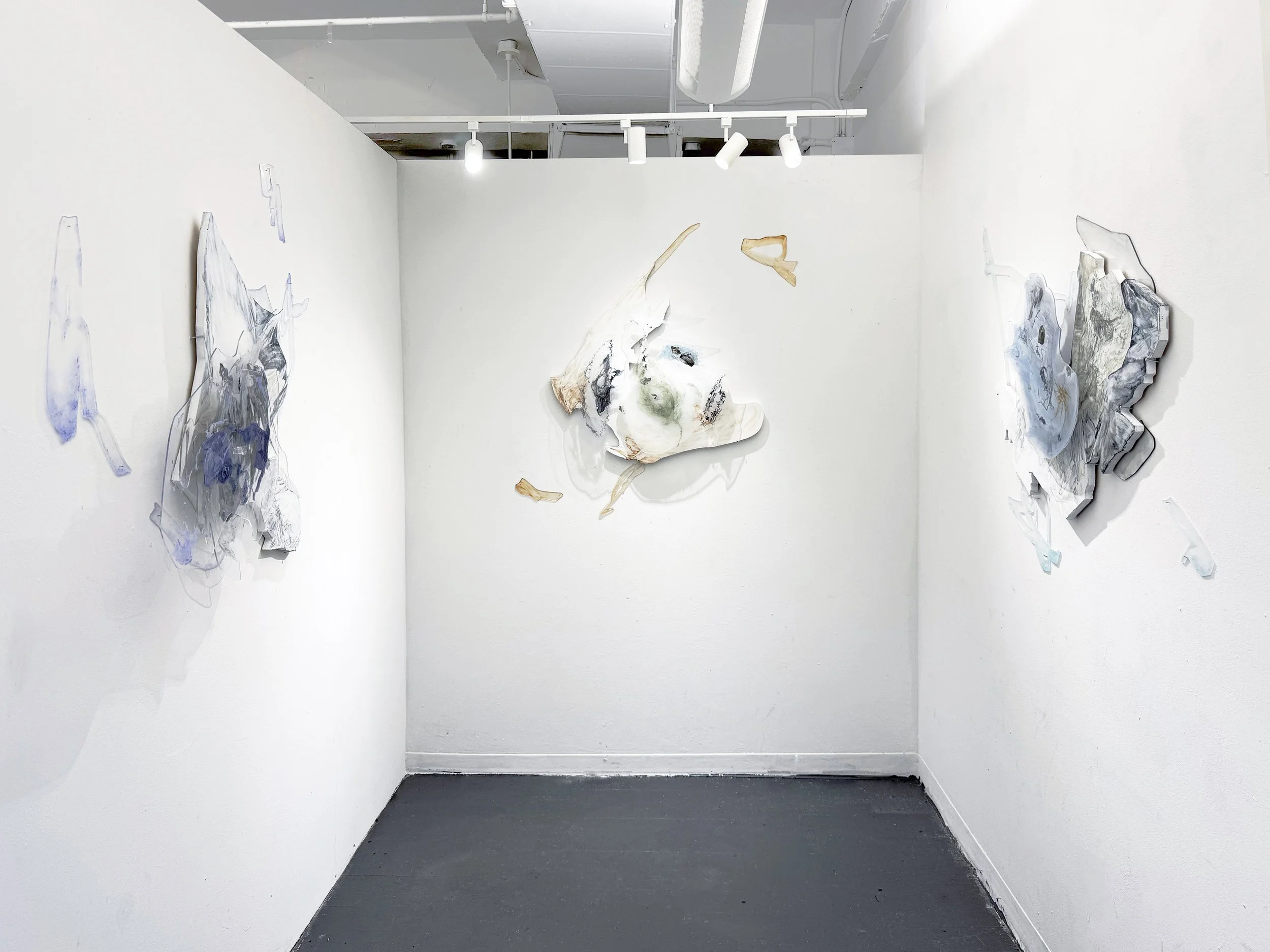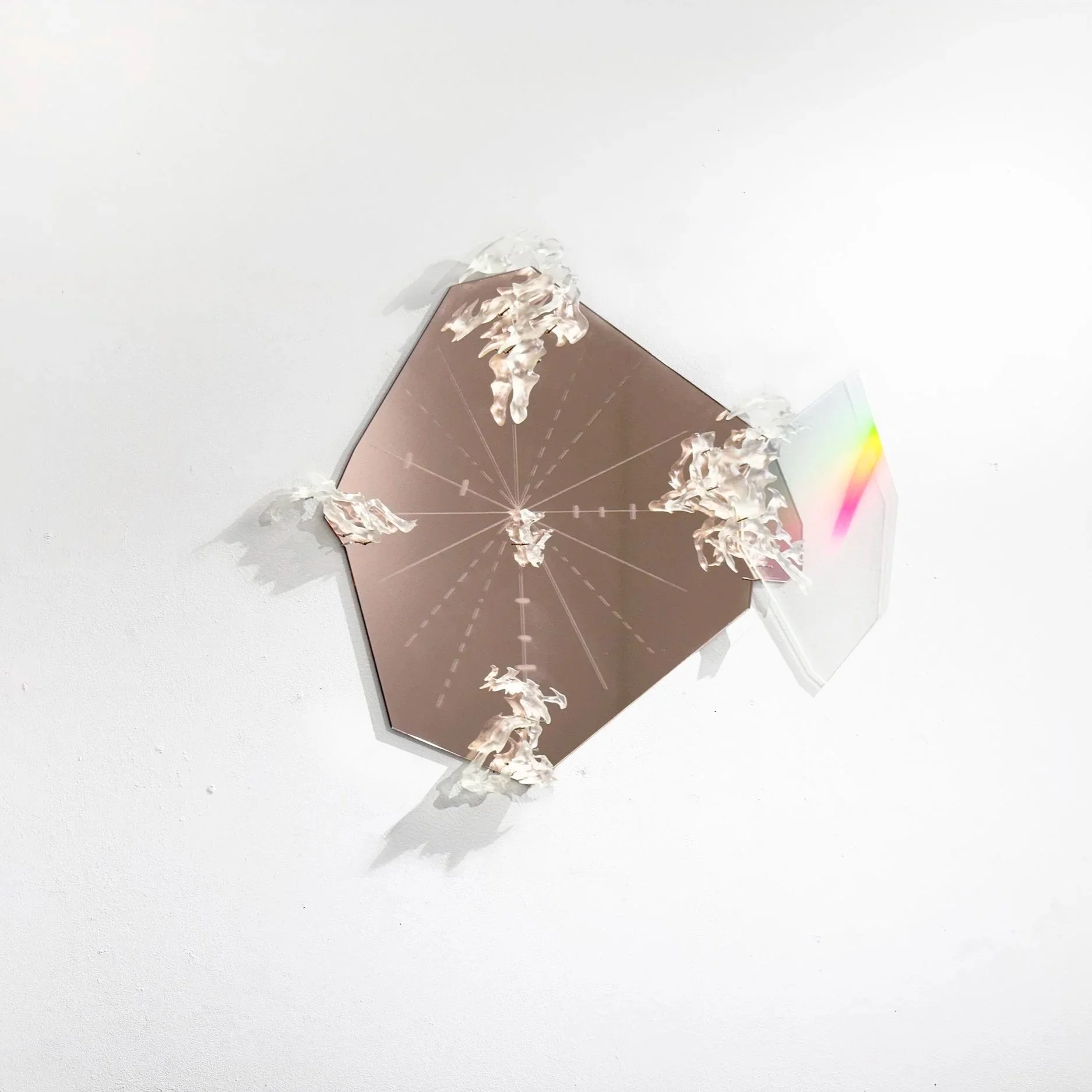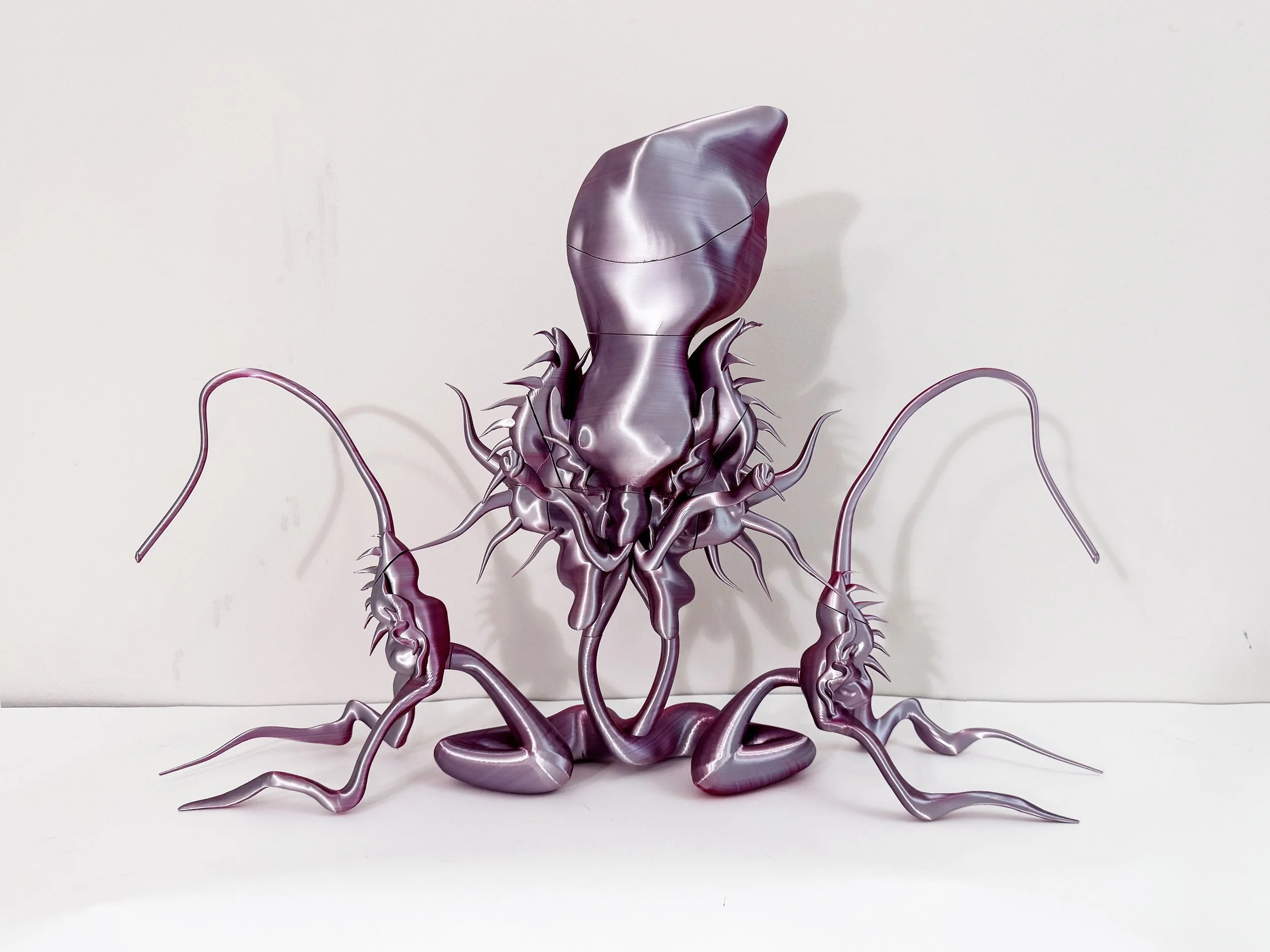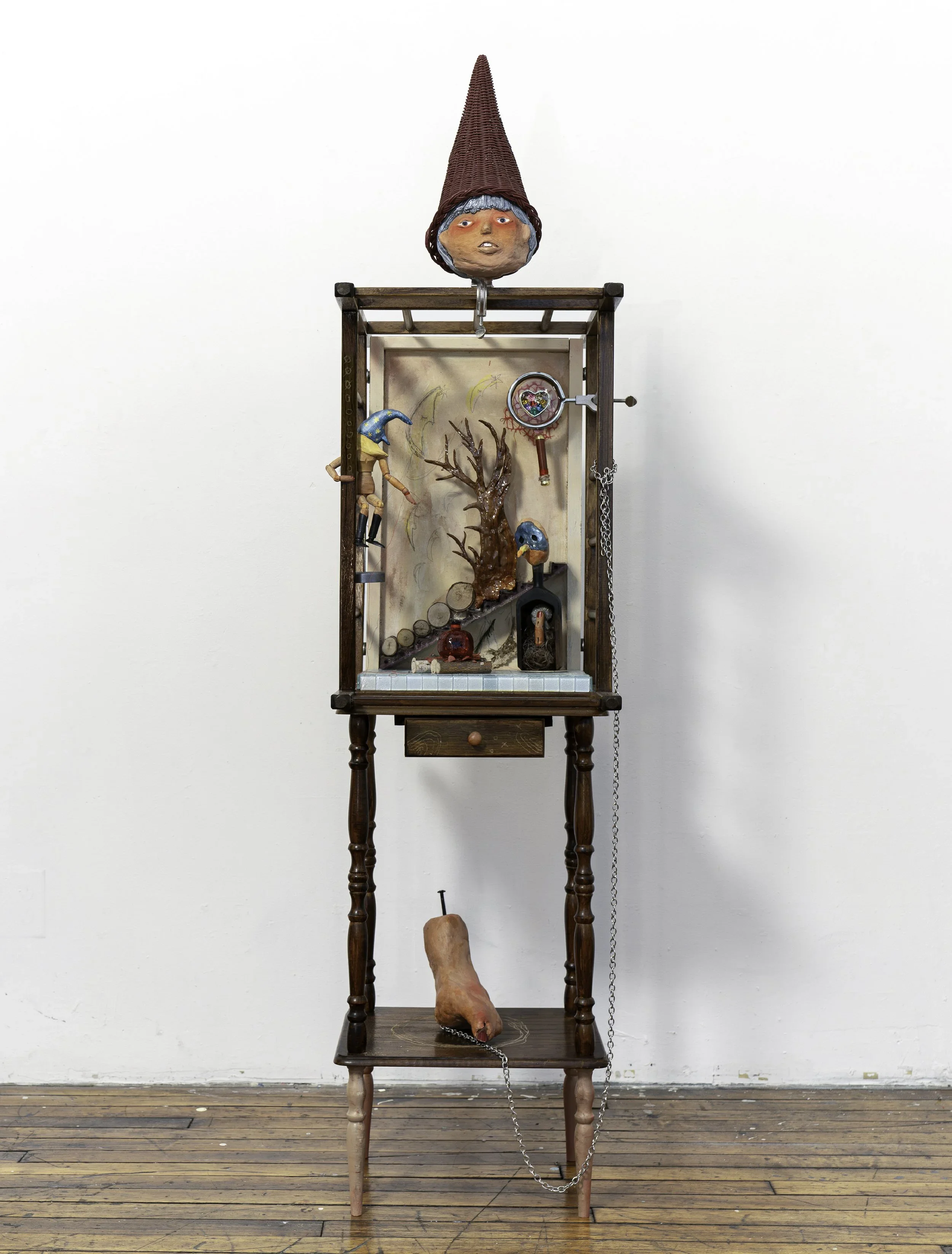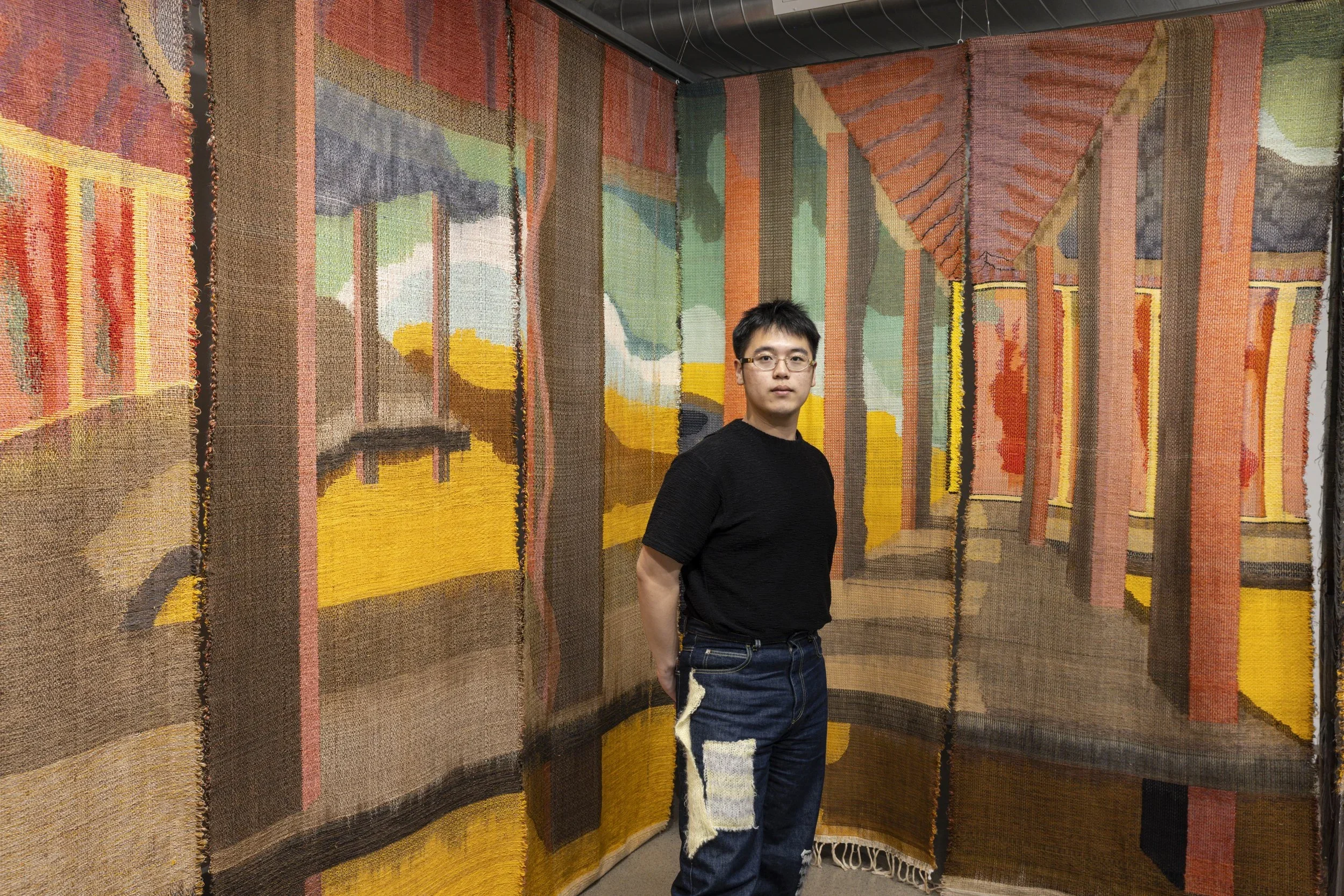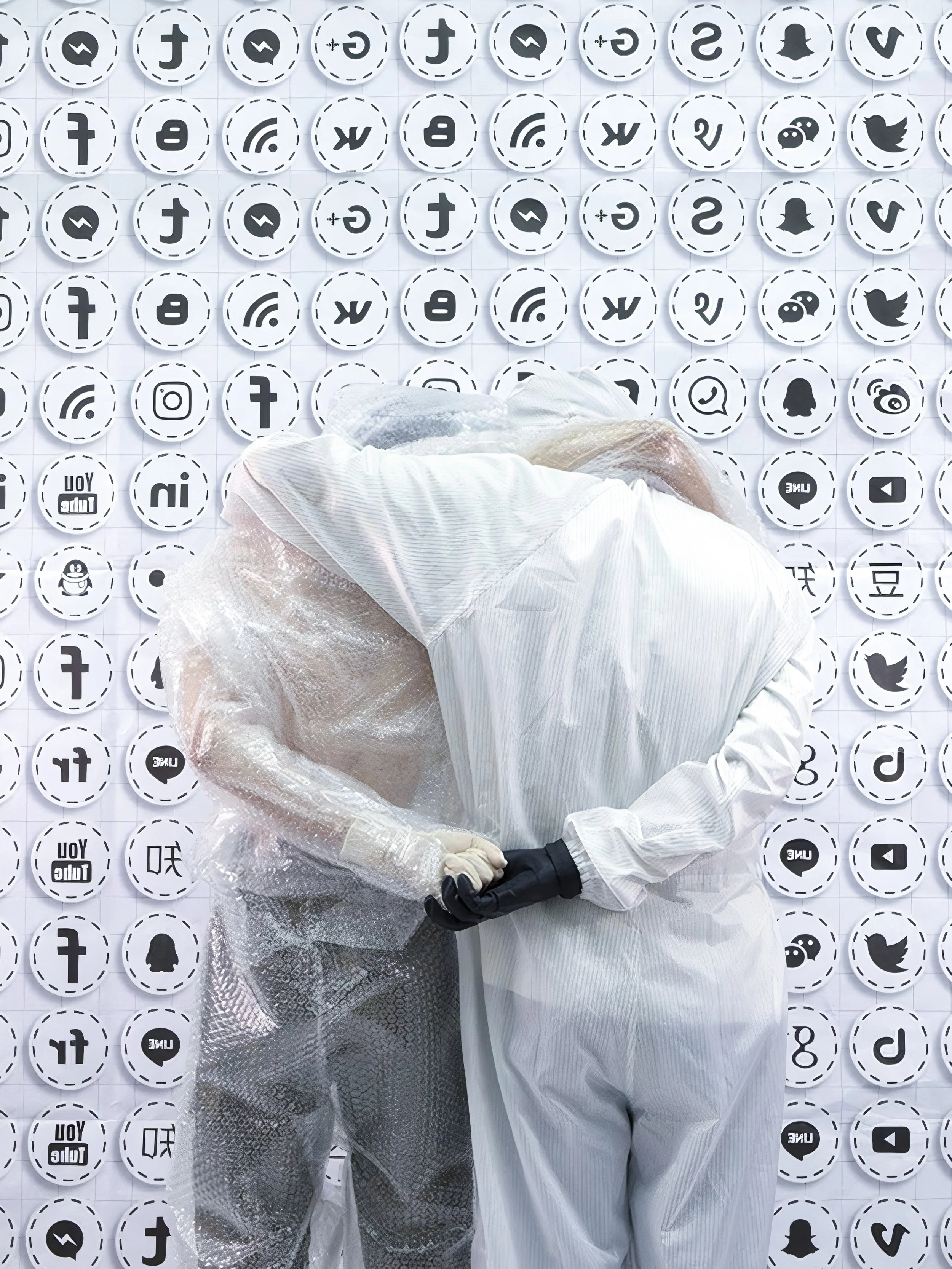10 Questions with Yang Lu
Yang Lu attended the School of the Art Institute of Chicago for a BFA. Recent solo exhibitions include the Chicago Grand Gallery, IL, USA; past solo exhibitions include "Contours of Chance" at CICA Museum in South Korea. Group exhibitions include "Trace Unknown," Color Club, Chicago, IL, USA; On The Verge of Hope, Gallery Wrightwood, Chicago, USA; Yata Bhaavo, Tat Bhavti, HAZ Gallery, Chicago, USA; Emotion, Cista Arts, London, UK; FRAGMENTS, Tapiial Virtual Gallery, Santiago, Chile; Sonic Sculptures 3, Nottingham, UK.
Yang Lu - Portrait
ARTIST STATEMENT
Yang Lu's work resists human-centred narratives and seeks to dismantle the illusions that sustain them. Yang creates objects that operate as fragments from elsewhere, mirrored forms, alien inscriptions, and transparent architectures that neither reflect us fully nor explain themselves. These works emerge from a refusal to reduce existence to binaries: life and death, self and other, human and nonhuman.
Yang approaches painting, sculpture, and technology as unstable surfaces where meaning collapses and re-forms. Engraved acrylic, 3D-printed structure, and laser-engraved glyphs become tools to imagine an alien gaze, cold, detached, and free from empathy, turning its attention back toward humans. In this reversal, the viewer is placed in the position of the gazed upon, experiencing the disquieting vulnerability usually reserved for the nonhuman within anthropocentric narratives.
Yang's practice is not about offering resolution but about opening fractures: mirrors that fail to flatter, signs that cannot be decoded, and images that haunt without revealing their origin. Each work acts as a counter-gaze to the gaze, a counter-definition to the definition, pressing the viewer to confront the dangers and limitations of anthropocentrism.
The Rogue Planet, 2025 © Yang Lu
INTERVIEW
How did your education shape the way you think about art?
My education shaped the way I think about art less as a single discipline and more as a field of intersections. I was exposed to painting, sculpture, and technology, but what really influenced me was seeing how each medium carries its own logic, and how those logics interact. That interdisciplinary approach pushed me to treat art as a space where different systems, visual, mechanical, and even philosophical, can meet and collaborate. Instead of following a single tradition, I think about art as a dialogue between disciplines, where meaning often emerges from collisions or connections. The experience of studying at a professional art school gave me that broader lens, but also the courage to step beyond its boundaries.
What early experiences or influences helped you become the artist you are today?
Becoming an artist was a natural process. From early on, I felt that art gave me a way to express things that couldn't be captured in ordinary language. I've always been drawn to abstract concepts, and I found that visual forms could translate those ideas intuitively, in a way that goes beyond time or language. Painting especially became like a personal notebook for me, a way to record, organise, and structure my thoughts, almost like turning scattered notes into an essay. That freedom of expression, where the work doesn't need debate or explanation but simply exists as the embodiment of an idea, has been one of my strongest motivations. Those early experiences of using art as both expression and record shaped how I continue today.
The Rogue Planet I Collision Where the Story Begins, oil on CNC wood and plexiglass, 57 x 45 x 3/4 in, 2025 © Yang Lu
The Rogue Planet II Orbitless - Is Drifting Freedom or Disaster, oil on CNC wood and plexiglass, 57 x 47 x 3/4 in, 2025 © Yang Lu
You work across painting, sculpture, and technology. What drew you to combine these different media?
In fact, combining them was a very natural process. I've always been inclined to try new things and technologies, and I believe the development of technology is an unstoppable trend. Art must evolve with its time in order to remain vital. That's why I chose to bring together the two-dimensional and three-dimensional, the traditional and the modern.
Painting allows me to quickly record and transform ideas, creating unique images. Sculpture takes those ideas from two dimensions into three, breaking out of painting's frame and freeing the image from traditional order. Technology then gives me the ability to integrate them with a modern texture and contour, making my works more contemporary.
The way these different disciplines intertwine naturally generates meaning, such as how a painting can appear beyond theflat surface, or how a sculpture can acquire new textures through digital processing. The intersection of these disciplines always yields surprising innovations.
At the same time, working across media isn't about mixing for the sake of variety. It's about finding the right structure for each idea. This interdisciplinary approach allows the work to stand apart from the evaluative standards of any single discipline. Viewers can't simply interpret them through existing categories, which gives them greater freedom of interpretation and gives me greater freedom in creation.
How did you begin experimenting with engraved acrylic, 3D printing, and laser-engraved glyphs?
I started experimenting with engraved acrylic, 3D printing, and laser-engraved glyphs through my interest in pushing painting beyond the flat surface. Acrylic caught my attention because once it's engraved, it changes how light and reflection work, it's no longer just a surface but almost like a space in itself. From there, I began trying 3D printing and laser cutting because they gave me a way to create precise, almost unfamiliar forms that didn't feel tied to tradition. The glyphs especially came from my interest in creating a kind of language that looks detached from human writing. For me, these tools aren't just about technology; they're about finding new ways to let ideas take shape.
When We Sailed the Sea, steel, acrylic, 61x47x14 in, 2025 © Yang Lu
Your work often resists human-centred narratives, as you mention in your statement. What inspired you to challenge anthropocentrism in your practice?
My interest in challenging human-centred narratives comes from a critique of what I see as the 'big ego' of anthropocentrism. This mindset assumes humanity is the centre of everything and that all other beings exist primarily to serve us. It ignores the autonomy of other entities, treating them as instruments or resources, and frames the world according to human priorities. For example, discussions about planets often focus on whether they can be colonised, exploited, or used as backups for Earth, rather than considering them as worlds with their own value.
This behavioural pattern also negatively impacts human society. Those who control more resources gain the power to define the 'non-self,' which gives them the perceived right to ignore, or even dictate, the lives and opportunities of those being defined. In this sense, anthropocentrism is not just a philosophical issue; it's a social one, embedding inequality and domination.
In my work, I try to unsettle these assumptions. Through mirrored forms, transparent layers, alien glyphs, and ambiguous structures, I create art that exists independently of human primacy or expectation. The viewer isn't the centre of the piece; sometimes, they are even challenged by it. I aim to show how anthropocentric narratives conceal the fact that beings' not-self' are often defined and controlled, while also opening space for both the work and the audience to encounter existence on its own terms, beyond human-centred frameworks.
Can you describe your creative process? How does a piece usually begin, and how do you get to the final outcome?
My creative process is generally unplanned at first. It can stem from random inspiration or from my thoughts and notes on specific things I'm interested in. When I feel a subject should be explored further, I'll do some research, gather relevant information, and then sketch. Once I've condensed the final form of the work from my sketches, I'll develop a plan and gradually bring it to life. Of course, there are times when adjustments are made during this process. If I encounter a texture or feel that emerges by chance, I might retain it or intentionally utilise it.
Data Acquisition, 3d printing resin and rose gold mirror, 19 x 25 in, 2025 © Yang Lu
See Heaven, 3d printing resin and rose gold mirror, 27 x 16 in, 2025 © Yang Lu
Many of your works use mirrors, inscriptions, and fragments that resist explanation. What do you hope viewers experience when encountering them?
I hope viewers can experience a kind of counterintuitive surprise that provokes thought. These works aren't meant for purely pleasurable visual enjoyment; rather, they exist as a kind of mysterious presence that challenges common perceptions or habitual ways of thinking. People are naturally drawn to things that reflect their own image, and many won't pass up an opportunity to look in a mirror, but that is also a way of confirming one's existence through external appearances.
That's why I chose to engrave unreadable patterns on the mirrors. When viewers look at themselves, they can never fully see a clear image; instead, they might even feel 'marked.' This may make viewers feel uneasy, because these 'marks' and 'annotations' appear without their consent. Yet humans often do the same to other beings, imposing labels, interpretations, and judgments based on their own standards, without regard for the feelings of those being marked. Through the use of mirrors, inscriptions and fragments, I try to reverse this act of gazing and defining, creating an atmosphere in which viewers, while looking into the mirror, feel targeted, observed, analysed, and recorded, almost like a specimen. This is intended to provoke reflection and awareness in the audience. This sensation, initially attractive but increasingly uncanny the longer you observe it, is exactly what I aim to create. By combining allure with discomfort, the work encourages viewers to become aware of and reflect on the psychological impulses behind this behaviour, making their thought process part of the experience.
You've exhibited internationally, from Chicago to South Korea and the UK. How have these different contexts influenced your work or its reception?
Exhibiting internationally has shown me that interdisciplinary work often finds a home in spaces that are open to experimentation. Because interdisciplinarity is still a relatively new approach, only galleries, museums, and institutions that are receptive to emerging art forms tend to showcase it. I've found that these institutions, regardless of location, share an open-mindedness and a willingness to engage with works that challenge traditional boundaries. This has reinforced my belief in the importance of creating work that is true to its own logic and ideas, knowing that the right audiences and contexts will respond to it thoughtfully.
The Echo from Europa’s Ocean, 3D printing PLA, 37 x 12 x 25 in, 2024 © Yang Lu
What themes or questions continue to return in your practice, even as your methods evolve?
I'm drawn to exploring themes like perception, the limits of human-centred narratives, and the ways meaning is constructed or projected onto the world. Questions about identity, observation, and the relationship between the self and the 'non-self' also recur, along with ideas around illusion, reflection, and the collapse of binary logic.
For me, the conceptual and thoughtful nature of the work is what drives it. I see art primarily as a way to express ideas rather than as decorative visual pleasure. While the forms and techniques I use may change, these underlying concerns give the work coherence and depth, inviting viewers to reflect, question, and engage with ideas that resist easyinterpretation.
Lastly, looking ahead, what future projects or directions are you most excited to explore?
I'm most excited to continue exploring interdisciplinary approaches that combine painting, sculpture, and technology in new ways. In the future, I hope to create works that involve machinery and movement, such as dynamic sculptures or interactive installations. I want to push the boundaries of how materials, form, and motion can convey abstract ideas, especially around perception, non-human perspectives, and the ways meaning is constructed.
These projects would allow viewers to experience the work in a more immersive and participatory way, where interaction and observation become part of the piece itself. Ultimately, I want my future projects to keep questioning assumptions, opening up new ways for people to engage with art, and giving both the work and the audience a sense of freedom to think and reflect.
Artist’s Talk
Al-Tiba9 Interviews is a promotional platform for artists to articulate their vision and engage them with our diverse readership through a published art dialogue. The artists are interviewed by Mohamed Benhadj, the founder & curator of Al-Tiba9, to highlight their artistic careers and introduce them to the international contemporary art scene across our vast network of museums, galleries, art professionals, art dealers, collectors, and art lovers across the globe.



